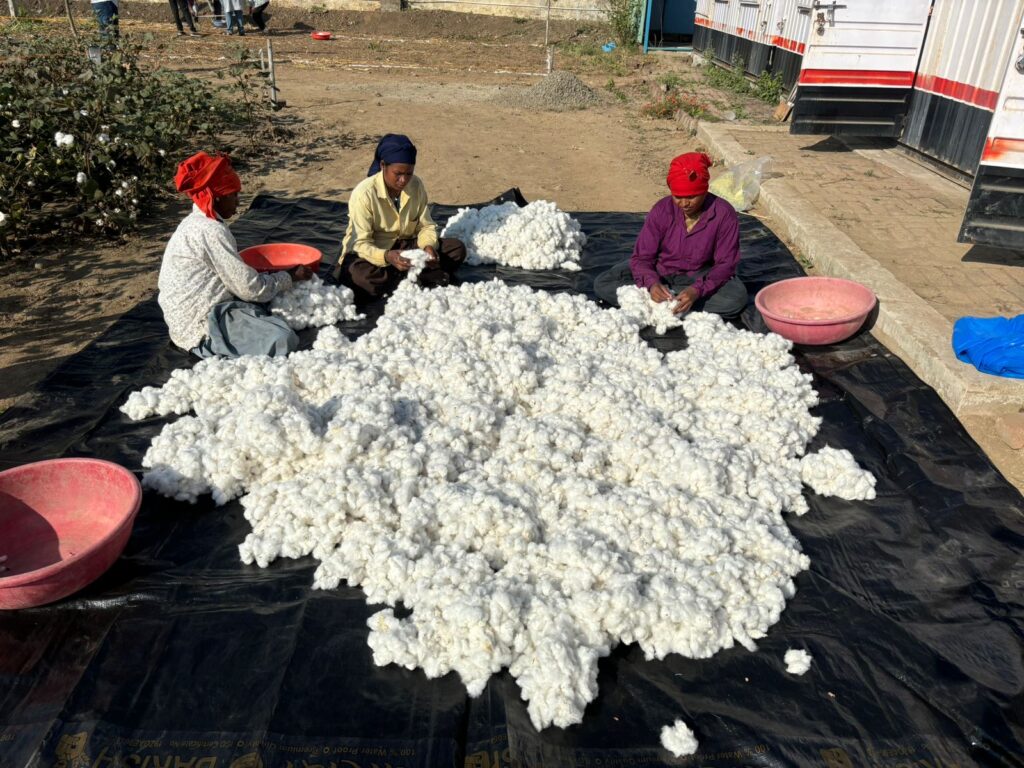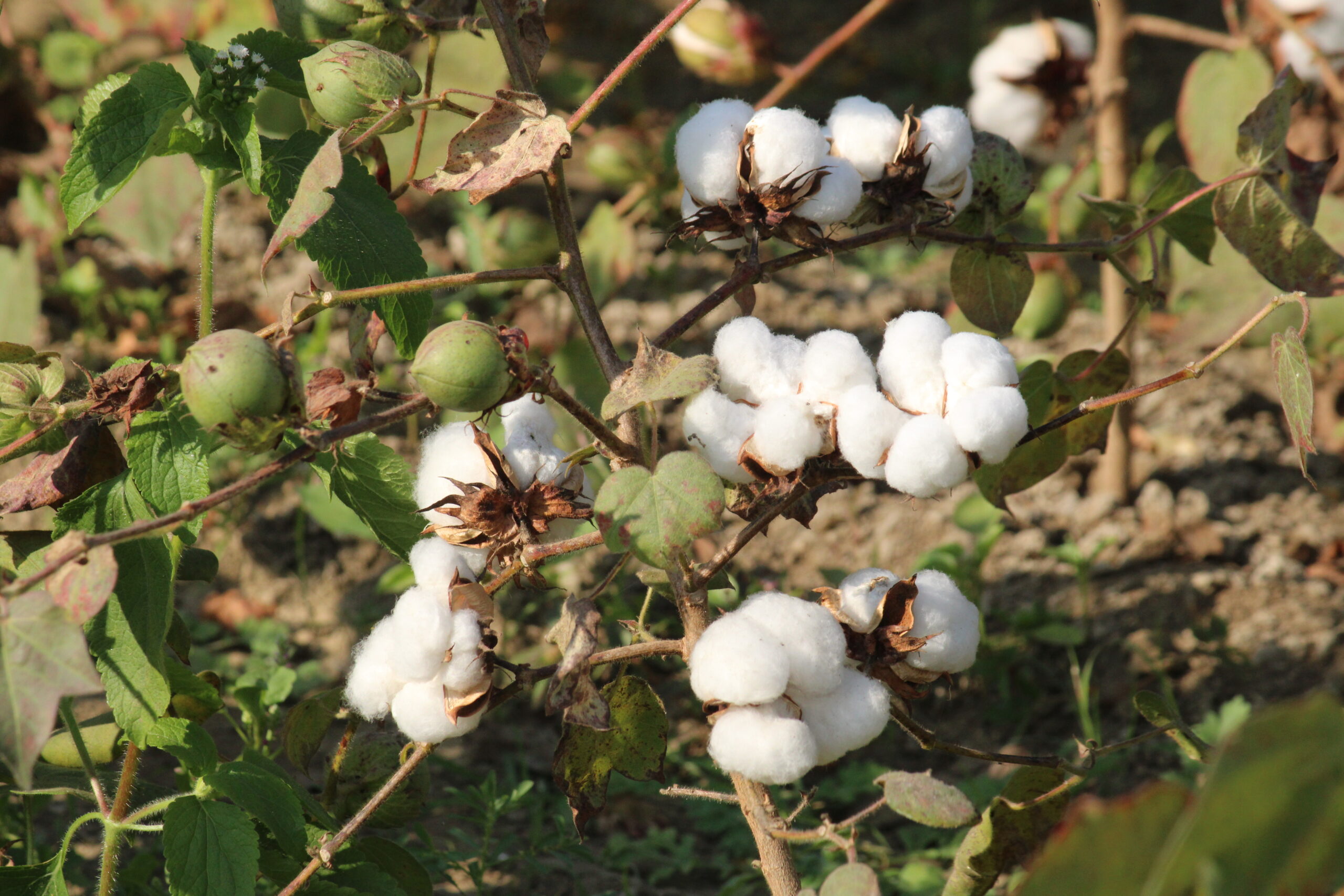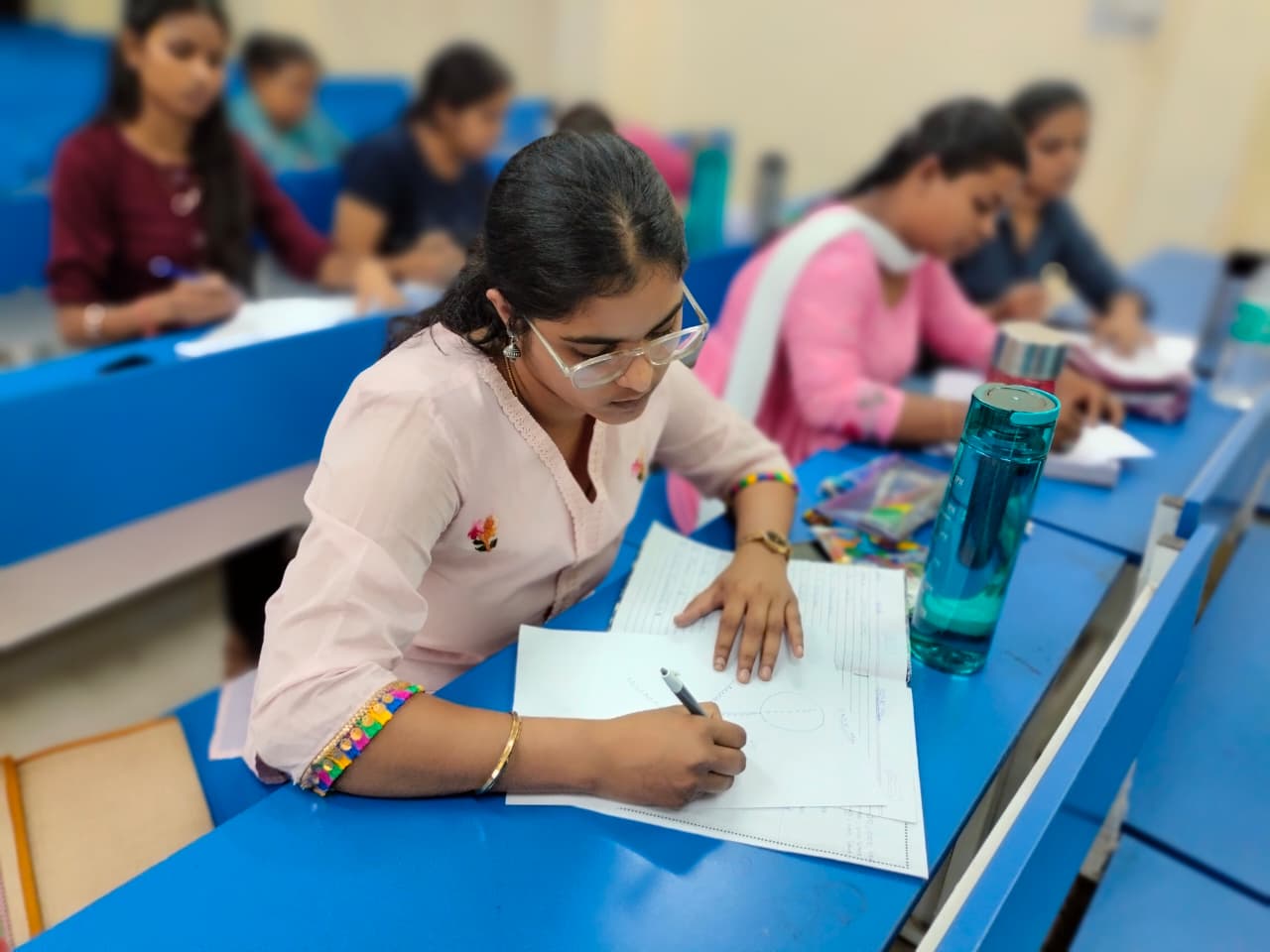Cotton. A crop and textile that has woven itself into our lives, to quite literally touch us all. We wear and use it daily and probably forget its journey from field to fabric. So much so that one is more likely to use the word ‘cotton’ in association with everyday products – like clothing, bedding, or oil. For a cotton farmer in India, however, the word evokes thoughts of a long agricultural journey which begins with a seed sown in the monsoon. After sowing, cotton plants must be nurtured for half a year before their cotton can be harvested, cleaned, and sold as a raw product to transform into the soft, breathable textile we all love. The cultivation of cotton is of immense significance to India. As the world’s second-largest producer, India contributed 21% of the 27.3 million tonnes of raw cotton cultivated globally across 2024-25.
While we all enjoy the comfort of cotton, we may be unaware of the complex history of its cultivation across India, and the reality faced by smallholding farmers who grow it today. Following the introduction of Bt cotton in India in 2002 – a new variety that carried resistance to pests – smallholding farmers’ cultivation patterns shifted dramatically, especially those in traditional cotton-growing regions of Gujarat, Telangana, and Maharashtra. Hopeful under the promises of high cotton prices, farmers began to focus solely on growing cotton and less on growing traditional food crops. As time progressed, the prices of cotton and quality of seeds became unreliable, and the need to use pesticides resurfaced. Farmers thus found themselves in a deep predicament, faced with high input costs, debt, and food insecurity, made further difficult by reducing soil fertility and unpredictable weather.
Unfortunately, this is the daily reality faced by most of India’s cotton farmers, but we believe there’s an opportunity for change: a future distilled in the essence of Naandi’s Arakunomics model where cultivating cotton as a cash crop is a sustainable, profitable enterprise, carried out by prosperous smallholder farmers who earn well by caring not just for their cotton crop, but for their diverse food crops and their soils too.
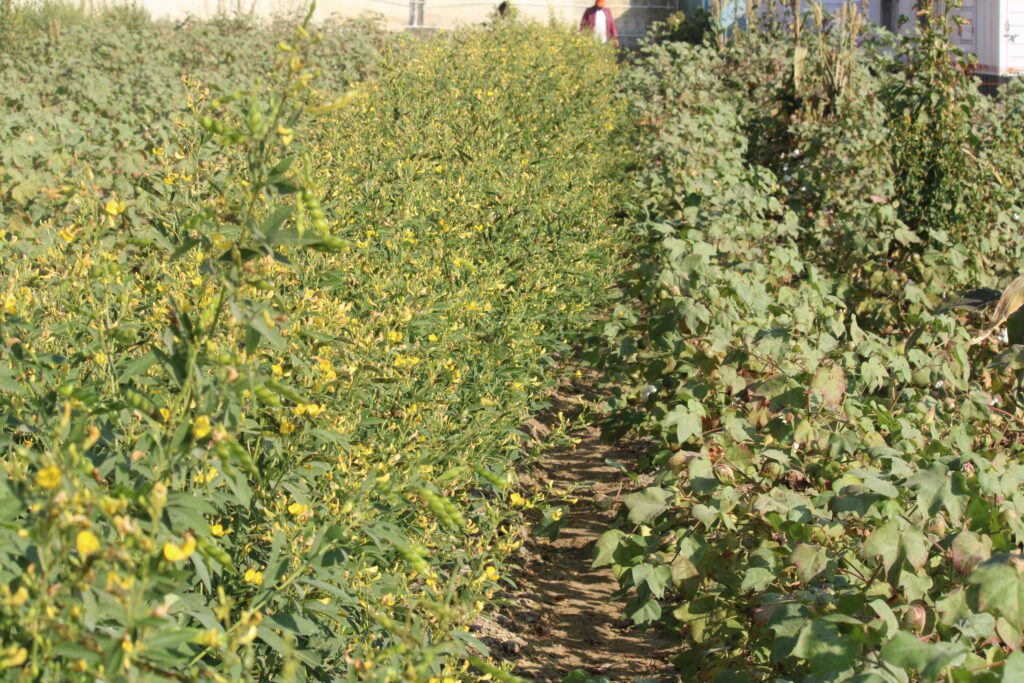
To showcase the feasibility of a sustainable future for cotton, a vital commodity and agricultural lifeline, Naandi established in July of 2024 a 6-acre Cotton Research Centre in Wardha, Maharashtra – an agrarian region well known for cotton production. The aim of Naandi’s Cotton Research Centre (NCRC) is to refine the cultivation of cotton and food crops with organic-regenerative agriculture, utilising chemical-free, soil-enriching inputs and practices which enhance biodiversity of life above and below soils. Here, you’ll witness with all your senses a biodiverse ecosystem filled with rows of lush, green cotton flanked by various intercrops (depending on the season) and surrounded with the sounds of life – buzzing insects and chirping birds.
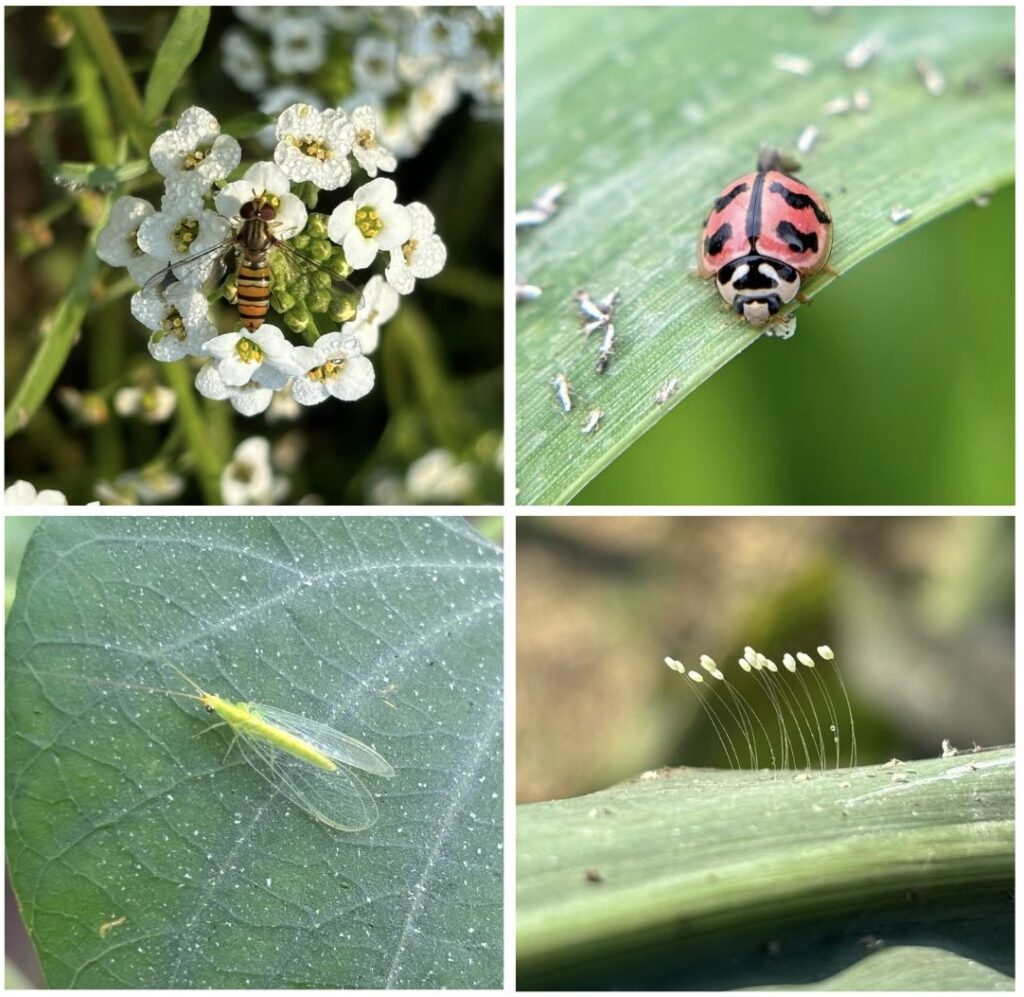

The soil, enriched by compost and organic bio-inputs made on-site from cow dung, recycled biomass, and microbial inoculants, is what feeds the cotton plants and intercrops, strengthening their resilience against pests and raising their quality. As pests are a natural phenomenon in all ecosystems, the solution towards diminishing their harm is not by using pesticides, which harm plants, birds, and beneficial insects. Instead, our teams use natural pest management techniques to carefully, creatively, introduce good insects to manage the harmful ones. Like hatching wasps and setting up pheromone traps, which attack and lure worms and moths which eat and damage the cotton. Beneficial insects spotted at NCRC and various species of birds also do their part in pollination and in managing harmful aphid outbreaks. Using natural remedies and working with nature in this way, not against her, is critical to counteract expected dangers and damage from pests.
After its first season, NCRC reaped an impressive harvest of fluffy white cotton – 1,664 kgs harvested and bagged as a tangible result of success. Along with the operations and agricultural teams, we are thrilled at these results. The future of NCRC in Wardha appears bright, and we are optimistic about the future of other cotton-growing regions, within and outside of Maharashtra, if Naandi’s Arakunomics model and knowledge of its organic-regenerative practices spread and are adopted more widely.
